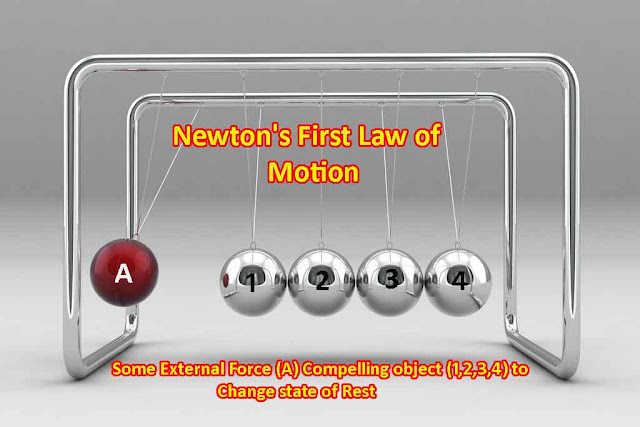Momentum: Definition [formula,units,equation,linear momentum,examples]
By the end of this article, you should be able to define What is linear momentum, definition, formula, units, equation, describe the movement of objects. Let's discuss one by one.
The force required to start or stop a moving body depends upon.
Momentum (kg m/s) = Mass (kg) x Velocity (m/s)
p equals the mass multiplied by the velocity. The unit of mass is the kilogram (Kg) and the unit of velocity is meters per second(m/s). So, the unit of p is kilogram meters per second(Kg m/s).
So, let's take a look at a simple question.
p = M x V
The total momentum before an event is equal to the total momentum after an event.
It is actually really straightforward. We are going to look at two good examples and you'll soon get the idea.
I should point out that the exams are often asked questions based on the ideas.
What is Momentum- Definition (Linear Momentum)
It is the quantity of motion contained in the body. Here's the key fact,- All moving objects have momentum.
- But if an object is not moving its momentum is zero.
- Motion in a body can be produced or destroyed by applying force on it.
| Q - A car has a mass of 1000 kilograms and it is not moving. What is a momentum (p) of the car? Answer - In this case, the car's not moving and remember the objects that are not moving have a momentum of zero. |
The force required to start or stop a moving body depends upon.
- Mass of the Body - When a ball and a big piece of stone are allowed to fall from the same height, we find that a much greater force is required to stop the big piece of stone than the ball. Thus larger the mass of a body, greater is its linear p.
- The velocity of the body - A bullet thrown with the hand can be stopped much more easily than the same bullet fired from a gun. This is because in the latter case, the velocity is much larger. Therefore, larger the velocity of a body, greater is its linear p.
Must Read:
Momentum Equation (Momentum Formula)
Now you have to learn the above points. As the quantity of motion in a body can be produced or destroyed by applying force on it. Therefore, the p of a body is measured by the force required to stop the body in unit time. It has been often asked in the exam that how to calculate the p. We calculate p by using this equation.Momentum (kg m/s) = Mass (kg) x Velocity (m/s)
p equals the mass multiplied by the velocity. The unit of mass is the kilogram (Kg) and the unit of velocity is meters per second(m/s). So, the unit of p is kilogram meters per second(Kg m/s).
So, let's take a look at a simple question.
| Q- There is a car has a mass of 1000 kilograms under moving at 20 (m/s) meters per second. What is the p of the car? Answer- In this case, the car is moving. So, it must have momentum. Remember that p equals the mass multiplied by the velocity.
|
Momentum Units
The linear p of a body depends upon its mass and velocity. It is measured by the product of the mass of the body and its velocity i.e. p = mass x velocity. If a body of mass m is moving with a velocity v, its linear p is given byp = M x V
- Linear momentum(p) is a vector quantity.
- Its direction is the same as the direction of the velocity of the body.
- SI unit of linear p is kg m/s and
- CGS unit of linear p is g cm/s.
Momentum Examples
Okay, we're now going to use p to describe the movement of objects.The total momentum before an event is equal to the total momentum after an event.
It is actually really straightforward. We are going to look at two good examples and you'll soon get the idea.
I should point out that the exams are often asked questions based on the ideas.
- Taking an example of a cannon. With a cannonball, before the cannon fires, neither the cannon nor the cannonball is moving. So, the total p before firing equals zero.
Total p Before Firing = Zero
- When the cannon fires it recoils and that means that the cannon moves backwards. The backwards p of the cannon equals the forwards p of the cannonball. So, the total p before firing and after the fire in a zero.
Total p After Firing = p of Cannon + p of Cannonball.
Let's look at another example,
- A skateboarder balancing on his board. He's about to jump off. Before the skateboarder jumps neither the skateboard nor the skateboard will move him. So, the total p before jumping equals zero.
- After the skateboarder jumps the backward. The p of the skateboarder equals the forward p of the skateboard. So, the total p after jumping equals zero. Okay, so, hopefully now you can calculate p and then go on to use the idea of p to describe the movement of objects.
![Momentum: Definition [formula,units,equation,linear momentum,examples] Momentum: Definition [formula,units,equation,linear momentum,examples]](https://3.bp.blogspot.com/-iKlPz8QBOEg/WmC8SOtdAcI/AAAAAAAAAyw/w0MfAy1YzX8eIlhTpe-fRKZfHP2UvQj1gCLcBGAs/s640/momemtum.jpg)


Comments
Post a Comment